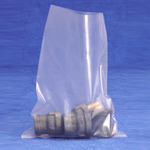Polypropylene (also known as polypropene or PP) has a chemical formula of (C3H6)n. It is a thermoplastic polymer mainly produced from propylene monomers. PP is a versatile plastic commodity that also functions as a fiber. In 1954, it was first polymerized simultaneously by the Italian chemist, professor, and Nobel laureate Giulio Natta and Karl Rehn, a German chemist.
Polypropylene has the unique ability that it can be manufactured via several different methods and be utilized in many applications like packaging, injection molding, and fibers. This plastic commodity is the second most popular in the world, only preceded by polythene.
 Share via email
Share via email



